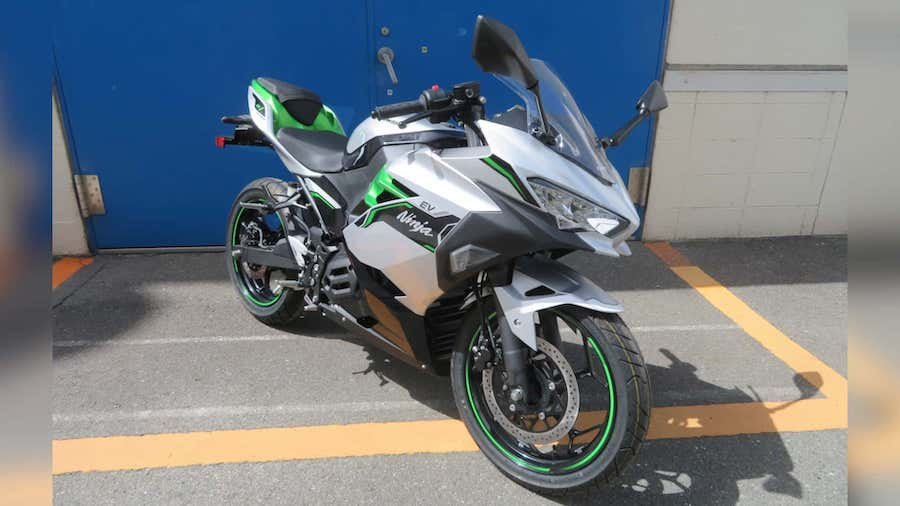Electric Kawasaki Ninja And Z Bike Details Revealed In Type Approval Docs

Remember Kawasaki’s introduction of its Ninja EV and Z EV prototype electric motorcycles at EICMA 2022? Although it may have taken some time for Kawasaki to publicly announce that it was working on electric motorbikes, it clearly hit the ground running by utilizing an existing combustion bike platform as a structural building block. That’s why, the company said, it expected to roll its first electric bikes out into the world as production models later in 2023.
Since it’s now the early days of August 2023, though, if you’ve been wondering about the progress on these two bikes, you’re probably not alone. That’s where governmental vehicle type approval documents can come in handy—like the ones that Kawasaki just filed with Australia’s Department of Infrastructure, Transport, Regional Development, Communications, and the Arts (say that five times fast).
Approval was officially granted to Kawasaki Heavy Industries Limited as of July 31, 2023, and is good through July 30, 2030, unless revoked earlier. The vehicle approved goes by the model designation NX011A, with variants listed as NR011A and NX011A. The NR011A, as is made clear through the photos filed with this type approval document, is the Z e-1. The NX011A, meanwhile, will more commonly be referred to as the Ninja e-1.
In addition to showing the first images of the completed vehicles, the type approval document gives a handful of details about Kawasaki’s first two production electric motorcycles that haven’t previously been released.
Motor power is listed at 9 kilowatts, or just a hair over 12 horsepower. That’s not crazy powerful, but keep in mind that these are meant to be commuter bikes, and also that they’re comparatively lightweight, especially for electric bikes.
Wheelbase on both the Ninja e-1 and the Z e-1 will be 1,370 millimeters, or about 53.9 inches. Curb weight of the Z e-1 is listed at 135 kilograms, which is about 297.6 pounds. As you would expect, the curb weight of the Ninja e-1 is slightly heavier and weighs 140 kg, or about 308.6 pounds.
How are weights like these possible with electric motorcycles? In 2023, a large amount of the weight of electric vehicles is their batteries. That’s due in part to currently available energy densities, in addition to customer aversion to range anxiety. At the public introduction of this project during EICMA 2022, Kawasaki mentioned that the production versions of these bikes will make use of swappable electric batteries instead of opting for larger, heavier packs that give longer range when fully charged.
As Gogoro has been demonstrating for years, swappable electric battery packs can be a viable way to power electric vehicles with short-range aspirations. That particularly includes urban commuter vehicles, which is what the Ninja e-1 and Z e-1 are meant to be. Infrastructure considerations are also a concern here, and how Kawasaki intends to address those has yet to be announced.
Here’s where it potentially gets interesting, though. Remember Gachaco? It’s the name that Japan’s big four motorcycle manufacturers (Honda, Kawasaki, Suzuki, and Yamaha) came up with for their dedicated battery swapping company. Formed in 2022, the goal was—you guessed it—developing swappable batteries for motorbikes. While some have been and will continue to be scooters, could Gachaco swappable batteries supply power to the upcoming Kawasaki Ninja e-1 and Z e-1? We’ll have to wait and see how it plays out.
Nouvelles connexes


